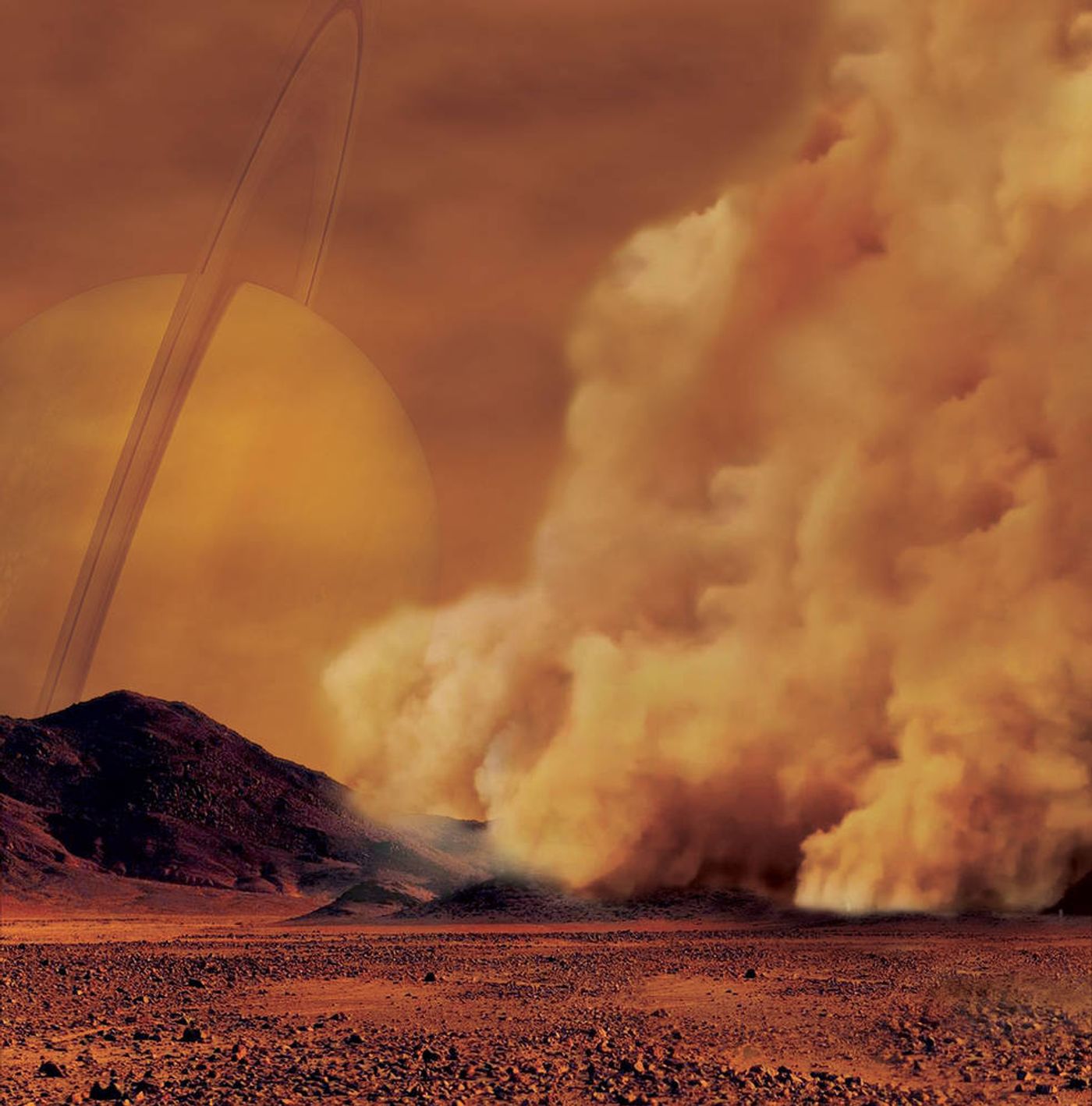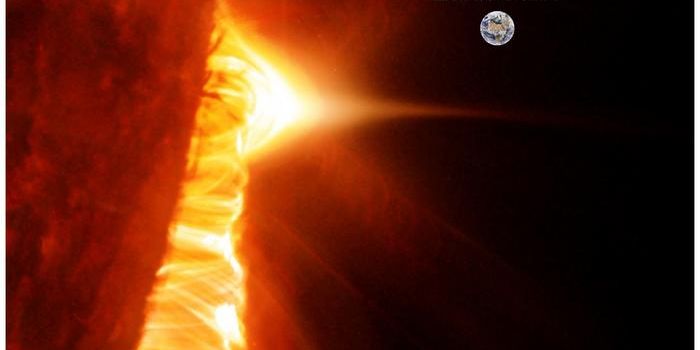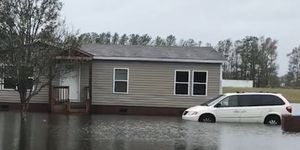Titan Experiences Dust Storms Just Like Earth and Mars
Dust storms aren’t particularly pleasant, but you should consider yourself lucky if you ever get to experience one. Planetary scientists have long believed that Earth and Mars were the only planetary bodies in our stellar neighborhood where dust storms could occur, but new evidence captured by NASA’s retired Cassini mission suggests otherwise.
Image Credit: IPGP/Labex UnivEarthS/University Paris Diderot – C. Epitalon & S. Rodriguez
As it would seem, researchers have discovered evidence for dust storms on Saturn’s moon Titan for the first time, making Titan the third-known planetary body in our solar system capable of exhibiting this kind of behavior. The findings appear this week in the journal Nature Geoscience.
"Titan is a very active moon," explained study lead author Sebastien Rodriguez from the Université Paris Diderot in France. "We already know that about its geology and exotic hydrocarbon cycle. Now we can add another analogy with Earth and Mars: the active dust cycle, in which organic dust can be raised from large dune fields around Titan's equator."
Related: This ice cloud on Titan theoretically shouldn't even exist
Titan has long captivated astronomers’ interest because of how consistent it is with the habitable characteristics we often search for when probing for life elsewhere in the solar system. It is the only moon in the solar system with a rich Earth-like atmosphere, it supports seasonal weather changes, and it’s the only other known body besides Earth where vast liquid oceans are thought to reside on the surface.
Titan’s oceans aren’t liquid water like Earth’s, however; scientists instead believe they’re comprised of chilly liquid methane. Nevertheless, it’s always possible that they could support life, and that’s what makes Titan so fascinating.
But now that we know Titan exhibits dust storms just like Earth and Mars, we’re one step closer to validating the moon’s similarities with terrestrial planets like our own. Still, that’s not saying much, as we have yet to explore the alien world in person.
The researchers originally wrote the dusty structures off as methane clouds, but upon analyzing their chemical signatures more closely with Cassini's Visual and Infrared Mapping Spectrometer, it became evident that this wasn’t the case. They also discerned the vastness of the dust storms, and how they existed in the moon’s atmosphere rather than directly on the surface; this indicates that Titan generates some hefty windspeeds.
"From what we know about cloud formation on Titan, we can say that such methane clouds in this area and in this time of the year are not physically possible," Rodriguez added.
"The convective methane clouds that can develop in this area and during this period of time would contain huge droplets and must be at a very high altitude -- much higher than the 6 miles that modeling tells us the new features are located."
Related: Could humans survive on Titan?
While interesting indeed, researchers still have a long way to go if we’re to understand these dust storms and what they mean for Titan. It should be interesting to see what future studies reveal about this mysterious world.
Source: NASA, Nature Geoscience









